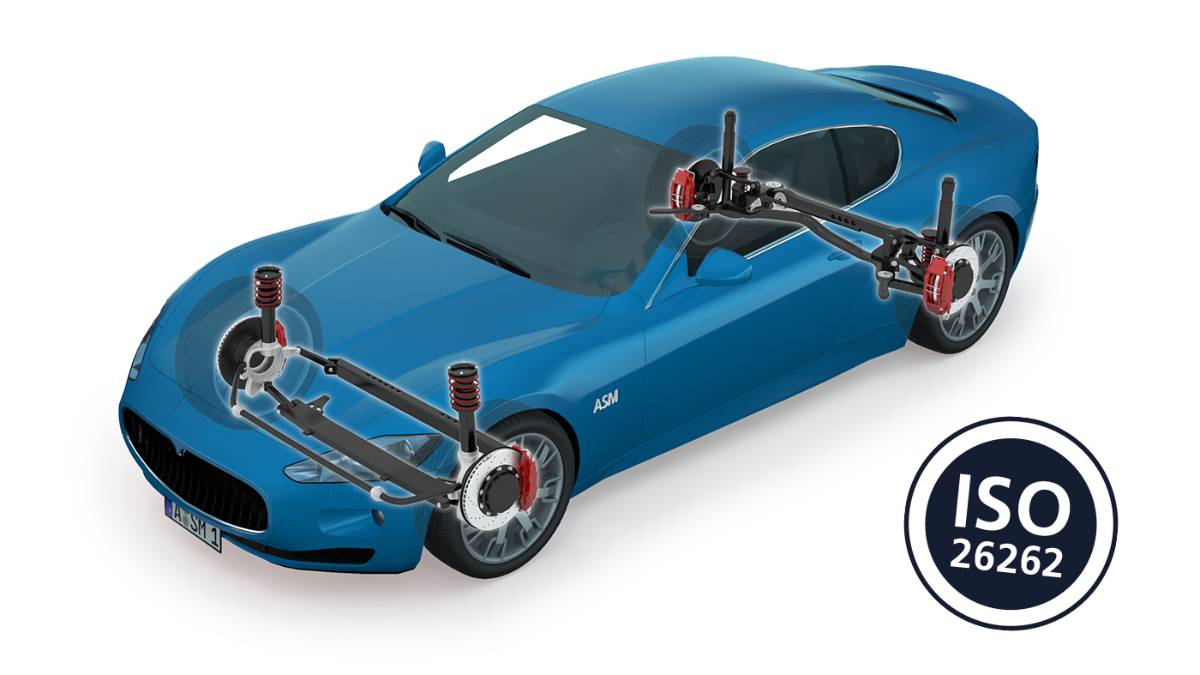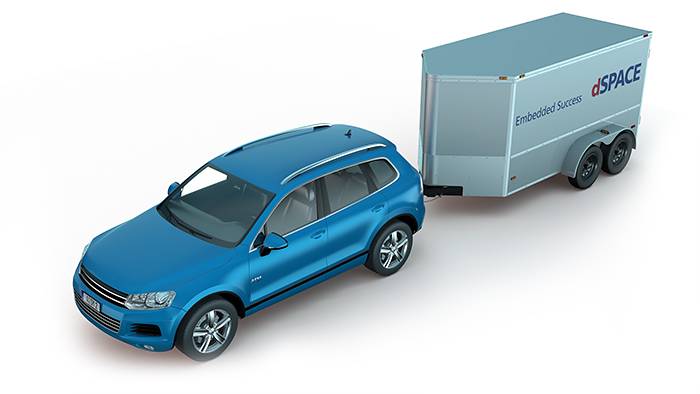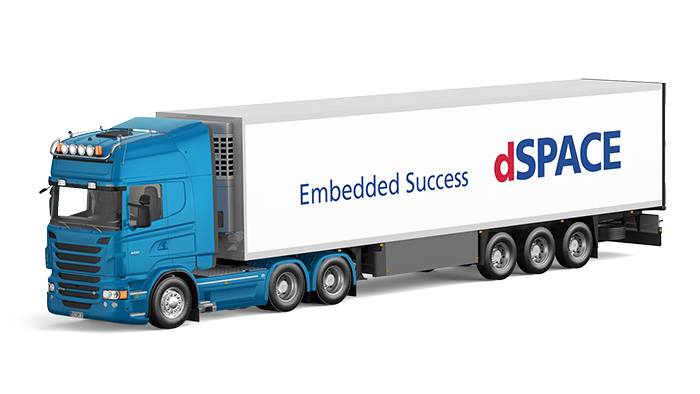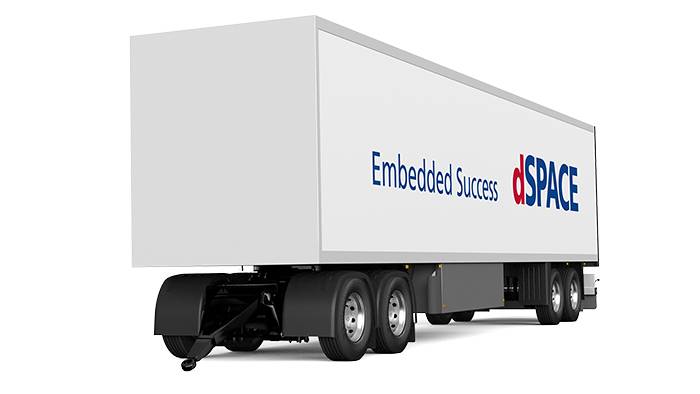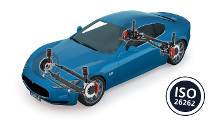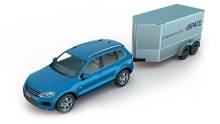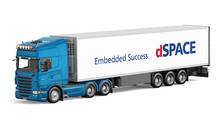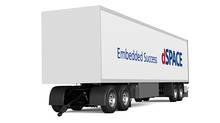ASM Vehicle Dynamics
Real-Time-Capable Vehicle Dynamics Model
The ASM Vehicle Dynamics Model is an excellent basis for developing and testing vehicle dynamics ECUs, such as ESP, steering and active damping ECUs. It is ideal for vehicle dynamics investigations in early development phases. A user interface lets users intuitively configure the vehicles and define maneuvers and roads.
-
ASM Pneumatics 1.0
- Pneumatic brake system simulation combinable with ASM Truck and Trailer models
- Support of air supply system, tanks, valves
- Soft ECU for ABS and EBS
- Modular model to support various axle configurations
-
A Moving Variety
For commercial vehicles, diversity is a standard. Scania has a nearly endless selection of vehicle types and modular vehicle configurations. And the generic electronic control unit (ECU) system has just as many variants. In a new test lab, Scania shows how this system can be validated with reliability.
-
Dynamic Models
Vehicle dynamics are the showpiece of car manufacturing. Porsche uses an efficient, seamless vehicle development process to pass on excellent vehicle dynamics genes from the first development steps to the final product.
-
Eyes on the Road
Powerful tool chain for validating driver assistance systems
Well-coordinated tools for simulation, testing and visualization are indispensable in validating modern driver assistance systems. Developers need a quick, easy way to model the properties of the vehicle under test, as well as road networks, traffic and electronic control units (ECUs), and to visualize driving maneuvers realistically. Together, the Automotive Simulation Models (ASMs), ModelDesk and MotionDesk from dSPACE form a perfectly coordinated tool chain.
-
Virtual Winter Tests
No modern vehicle ever reaches the market without first undergoing exhaustive tests. And test vehicles alone are no longer enough to test the complex electronic control units. This job is performed by simulation models, which shift ECU development into the virtual reality of a virtual vehicle. Dr. Hagen Haupt, head of dSPACE's Modeling Group, explains how the dSPACE simulation models are meeting this challenge.
-
Efficient Vehicle Dynamics Development via Simulation-Based Prognosis Tools
This paper presents a method for designing and tuning suspensions purposefully and quickly with the help of vehicle dynamics simulation. The method is based on the Automotive Simulation Models (ASM) from dSPACE, which have been extended for this use case. The ASMs support design engineers through all phases, from creating a virtual prototype up to close-to-production fine tuning during the test phase. This paper describes the necessary properties of the vehicle dynamics model that go beyond the functional scope of common handling models. At Daimler AG, the ASMs accompany the development during test drives, both for the pure vehicle dynamics design of the vehicle and for coupling the vehicle dynamics control systems to hardware-in-the-loop (HIL) systems.
- Open MATLAB®/Simulink® model
- For ECU testing and function development
- Intuitive graphical parameterization, and road/maneuver creation in ModelDesk
Application Area
ASM Vehicle Dynamics is an open Simulink® model for the real-time simulation of vehicle dynamics behavior. The model is typically used on a dSPACE Simulator/SCALEXIO to perform hardware-in-the-loops tests on electronic control units (ECUs) or during the design phase of controller algorithms for early validation by offline simulation. The model supports all relevant phases of the model-based development process.
Key Benefits
All of the Simulink blocks in the model are visible, so it is easy to add or replace components with custom models to adapt the vehicle’s properties perfectly to individual projects. The ASMs’ standardized interfaces allow the vehicle dynamics model to be easily expanded to meet specific requirements or even create a virtual vehicle. Roads and driving maneuvers can be created intuitively by using graphical tools with preview and clear visualization All parameters can be altered during run time.
Vehicle Characteristics
For realistic vehicle simulation, the vehicle model is designed as a multibody system. The model consists of elements such as a drivetrain with elastic shafts, a table-based engine, two semi-empirical tire models, a nonlinear table-based vehicle suspension model with kinematics and compliance, a steering model, and aerodynamics. An environment with a road, maneuvers, and an open- and closed-loop driver is included as well. All parameters can be altered during run time. To simulate brake systems, models of a dual-circuit hydraulics system and a pneumatics system are available as add-ons.
Components and Characteristics
- Multibody system consisting of a car body and four wheels
- 10 degrees of freedom (DoF)
- Map-based kinematics and elastokinematics for wheel suspensions
- Wheel suspensions with nonlinear spring and damper characteristics
- Aerodynamic forces and torques
- Brake model including a model for a physical brake servo
- Additional masses (fastened to the vehicle chassis)
- Steering model with 3 DoF, friction elements, and support for rack-and-pinion steering (EPS)
- Steerable rear axles
- Tire models: Magic Formula, TMEasy, and FTire
- Data import from suspension design tools, such as ADAMS, available on request
- ASM Vehicle Dynamics Product Information, PDF, English, 5559 KB
Drive innovation forward. Always on the pulse of technology development.
Subscribe to our expert knowledge. Learn from our successful project examples. Keep up to date on simulation and validation. Subscribe to/manage dSPACE direct and aerospace & defense now.

